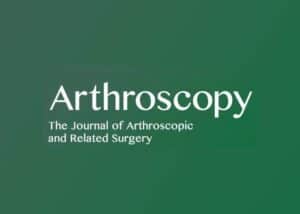
Authors:
Justin Rabinowitz, Jackie J Lin, Alyssa Greenhouse, Meghana V Rao, Matthew Provencher, Stephen Parada, Richard J Friedman, Josef K Eichinger
Abstract:
Purpose: To compare screw insertional torque and coracoid-glenoid compression from 4 fixation techniques with different screw design parameters and cortical augmentation for the Latarjet procedure.
Methods: Simulated Latarjet procedures were performed with 4 fixation techniques using laminated polyurethane blocks with dimensions similar to the coracoid-glenoid construct. The groups included DePuy Synthes Mitek 3.5-mm partially threaded screws with top hats, Arthrex 3.75-mm fully threaded screws with a 2-hole plate, Arthrex 3.75-mm fully threaded screws, and Smith & Nephew 4.0-mm partially threaded screws. Screws were inserted using a digital torque-measuring screwdriver to determine maximum insertional torque. Pressure-sensitive film was used to measure the maximum contact pressure and the effective pressure distribution (EPD) between the coracoid and glenoid; the EPD represents the percentage of the film’s surface area that experienced pressure greater than 10 MPa. One-way analysis of variance and post hoc tests were used for statistical analysis.
Results: Significant differences were found between the 4 fixation groups for each variable measured. The 2 cortically augmented systems produced significantly higher maximum insertional torque than the non-cortically augmented systems (P < .001 for both). The 3.75-mm screws with a 2-hole plate yielded significantly higher contact pressures than the 4.0-mm screws (P = .028). This group also had a high EPD, with a mean value more than double the values of the non-cortically augmented systems (P = .037 and P < .001).
Conclusions: Cortically augmented fixation methods showed higher maximum insertional torque, maximum contact pressure, and EPD between the surfaces of the coracoid and glenoid in this Sawbones model.
Clinical relevance: Various implants are available for the Latarjet procedure, but their biomechanical characteristics have not yet been fully elucidated. Graft fracture and nonunion represent 2 modes of failure that may be related to insertional torque and coracoid-glenoid compression. This study compared screw insertional torque and compression achieved using 4 fixation techniques with different screw design parameters and cortical augmentation in a Sawbones model.
For the complete study: The Effect of Screw Design and Cortical Augmentation on Insertional Torque and Compression in Coracoid-Glenoid Fixation in a Sawbones Model